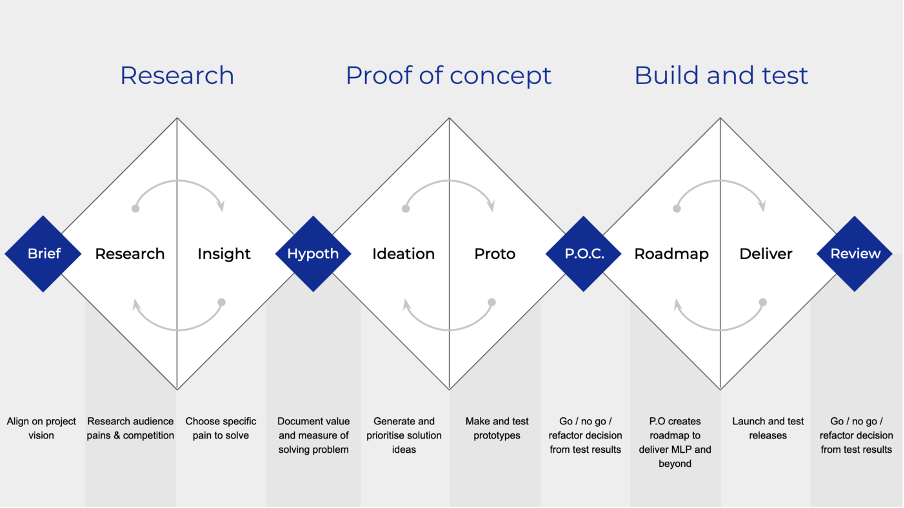The Double Diamond model has served as a foundational framework for many UX designers. Its structure of “Discover – Define – Develop – Deliver” provides a clear path from problem identification to solution. However, as the complexity of design challenges increases, the Double Diamond can reveal some limitations. This is where the Triple Diamond model steps in, offering a more nuanced and effective approach to address real-world issues.
Why the Double Diamond Can Fall Short
While the Double Diamond is a great starting point, it’s sometimes criticized for:
- Oversimplification: Complex design projects often don’t fit neatly into the linear stages of the Double Diamond. Real-world problems require more iterative and adaptive processes.
- Lack of Post-Launch Emphasis: The Double Diamond implies a “finish line” at the Deliver phase. However, successful products and services require continuous evaluation and improvement.
- Limited Systemic View: The Double Diamond often focuses on specific products or features, neglecting to consider the broader systems and contexts in which they exist.
The Triple Diamond: Design for Complexity and Impact
The Triple Diamond adds an additional diamond to the model, representing a deeper focus on broader systems, continuous improvement, and holistic evaluation.
- Discover: Similar to the Double Diamond, this involves user research and problem identification.
- Define: Framing the problem, understanding context, and refining design goals.
- Develop & Deliver: The iterative process of building and launching solutions.
- Deploy & Desist: The third diamond focuses on:
- Deployment: Implementation, scaling, and considering real-world impact.
- Desistence: Continuous evaluation, identifying when features or products should be sunsetted to avoid overcomplication.
Real-World Benefits of the Triple Diamond
- Government Services: Imagine a public benefit application process. The Triple Diamond helps designers address the initial system design (Develop & Deliver). However, it also encourages planning for scalable deployment and ensures mechanisms for improvement or even removal later on.
- Environmental Sustainability: Designing a product using sustainable materials is great, but the Triple Diamond pushes designers to consider the entire product lifecycle. This includes responsible disposal and ensuring components don’t end up in landfills (Desistence).
- Complex Business Systems: Enterprise software can evolve into convoluted tools over time. The Triple Diamond’s third stage encourages periodic evaluation of features and the deliberate removal of those that are no longer valuable.
Why the Triple Diamond Matters
The Triple Diamond expands the scope of UX design:
- Systems Thinking: It pushes designers to consider the broader implications of solutions outside of a defined product or service.
- User-Centricity Through Iteration: The third diamond promotes continuous improvement, ensuring that solutions don’t become stagnant but evolve with user needs over time.
- Ethical Design: Thinking about when and how to retire or replace features encourages responsible and sustainable design practices.
The Evolving UX Landscape
The Triple Diamond isn’t a replacement for the Double Diamond but an upgrade when tackling more intricate challenges or systems-level problems. It empowers UX designers to create long-lasting, impactful solutions that are not only functional but considerate of sustainability and broader societal implications. By adopting the Triple Diamond mindset, UX designers become strategic partners in driving meaningful change.
